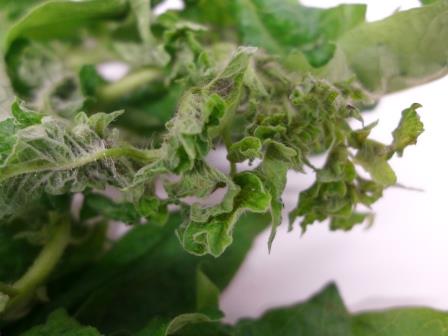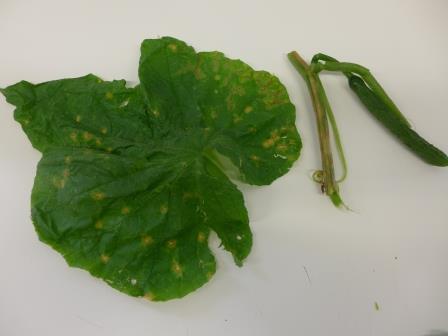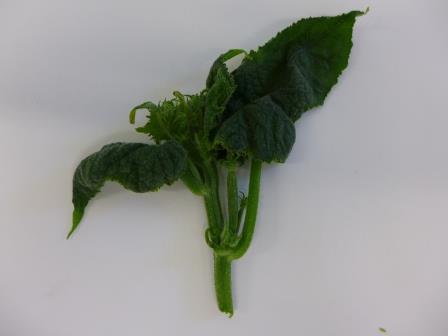Lack of light or virus?
2 November 2020 - Articles
Over the next months, light levels in the northern hemisphere will be relatively low. Light is very important for photosynthesis and therefore for crop growth. Lack of light can cause defects in the crop, which can sometimes be difficult to distinguish from viral infections or nutrient deficiencies.
Trudie Coenen, PlantDoctor at Eurofins Agro, explains: “Plant growth may be harder in dark periods. This can result in growth defects. On top of that, the relative humidity (RH) in the greenhouse is often harder to control and tends to be on the high side. That can cause defects or problems in young plants.”
Virus or no virus?
In this dark period, some plants may display symptoms indicative of a viral infection. In that case, it is very important to examine the plant; if a virus is found, you can act fast and minimize the damage caused in the crop. But it sometimes turns out that there is no virus present in the crop and that the cause is physiological, such as too little light. Defects can sometimes look very similar (see images by Trudie Coenen).
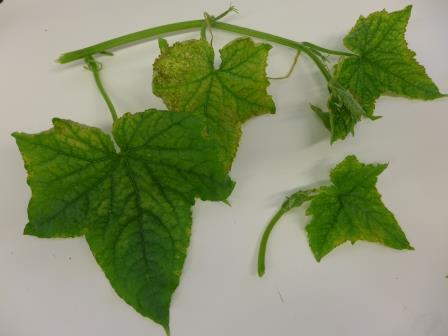
Zucchini yellow mosaic virus and melon necrotic spot virus (cucumber)
Curly top (tomato)
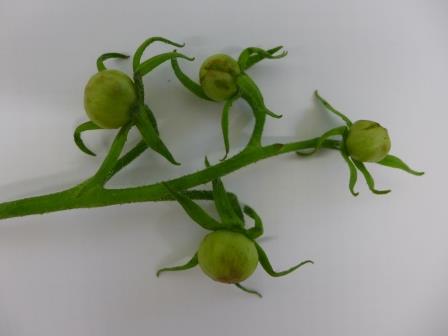
Physiological defect/calcium deficiency (tomato)
Tobacco necrosis virus (cucumber)
Scalding of the shoot apex, a physiological problem caused by high RH, too little light, and Ca deficiency (cucumber)
Coenen: “Problems can also be caused by excessive root pressure or a combination of too high RH and too little light. Secondary fungi such as Botrytis and Penicillium rot can cause problems, particularly when there is young tissue present or if small wounds are caused as a result of crop handling. Too high RH impedes transpiration, which can cause calcium deficiency in the young leaves at the top of the plant. This is because calcium is poorly mobile in the plant. A calcium deficiency causes weak cells, which can easily rupture. In cucumber, this causes disorders such as scalding of the shoot apex. This can be prevented by dosing sufficiently high EC in order to reduce root pressure, and by stimulating transpiration so that the young leaves at the tips also receive enough calcium.”
Steaming and available nutrients
When the greenhouse is cleaned, the soil can be sterilized by steaming. This process reduces the soil pH, which can drop to as low as 3 or 4. A low pH makes more manganese available to the plant, but overly high manganese levels can impede iron and zinc uptake. Iron is a moderately mobile element, so this can soon cause an iron deficiency in the youngest leaves, causing them to turn pale green. In addition, manganese levels that are too high under low pH conditions can be toxic to the plant.
“To provide insight into the levels of nutrients taken up by the leaves, Eurofins Agro offers a Greenhouse Horticulture Crop Check. We have target values per element for many crops,” Coenen explains.
Beware of fluoride
Ammonium bifluoride is the active ingredient in a glass cleaning product that is often used for cleaning greenhouses. In substrate-grown tomato plants, residual fluoride can cause damage if it comes into contact with the roots. In addition, fluoride in vapor form can cause scalding on aboveground parts of the plant. Make sure rooms in which glass cleaning is taking place are properly ventilated. It is very important to rinse everything down properly after cleaning with a product containing fluoride. Do not allow the rinsing water to enter the irrigation system.
Check for good measure
If you are unsure about something or have any questions, if you would like to know how good your starting situation for a new crop is, or if you have noticed visible defects in the crop, feel free to contact Eurofins Agro. We offer a range of analyses, such as an analysis for the presence of fungi and bacteria in your input water, a DisinfectorCheck involving an aerobic plate count, soil analyses, a diagnostic PlantDoctor analysis, and a DNA Multiscan (including Olpidium) to quickly screen for fungi and some bacteria. Rinsing water can also be checked by Eurofins Agro for fluoride and aluminum residues.
More information
Please contact horti@eurofins.com

